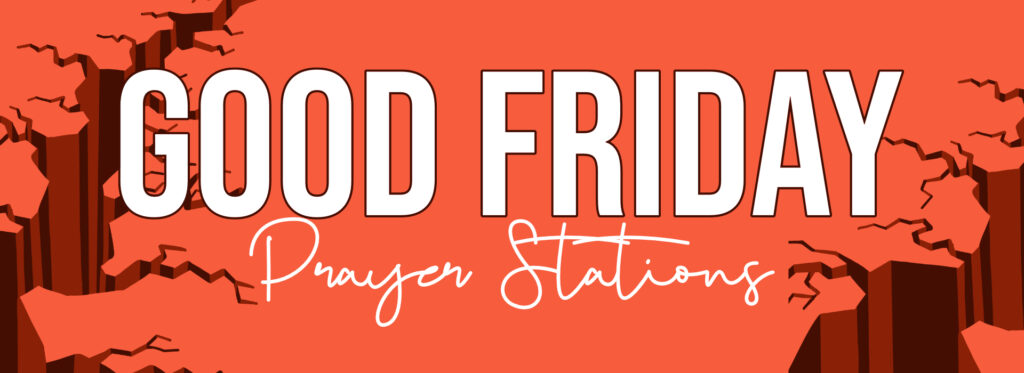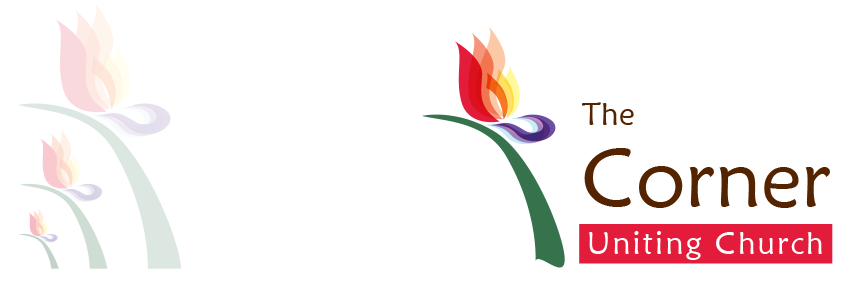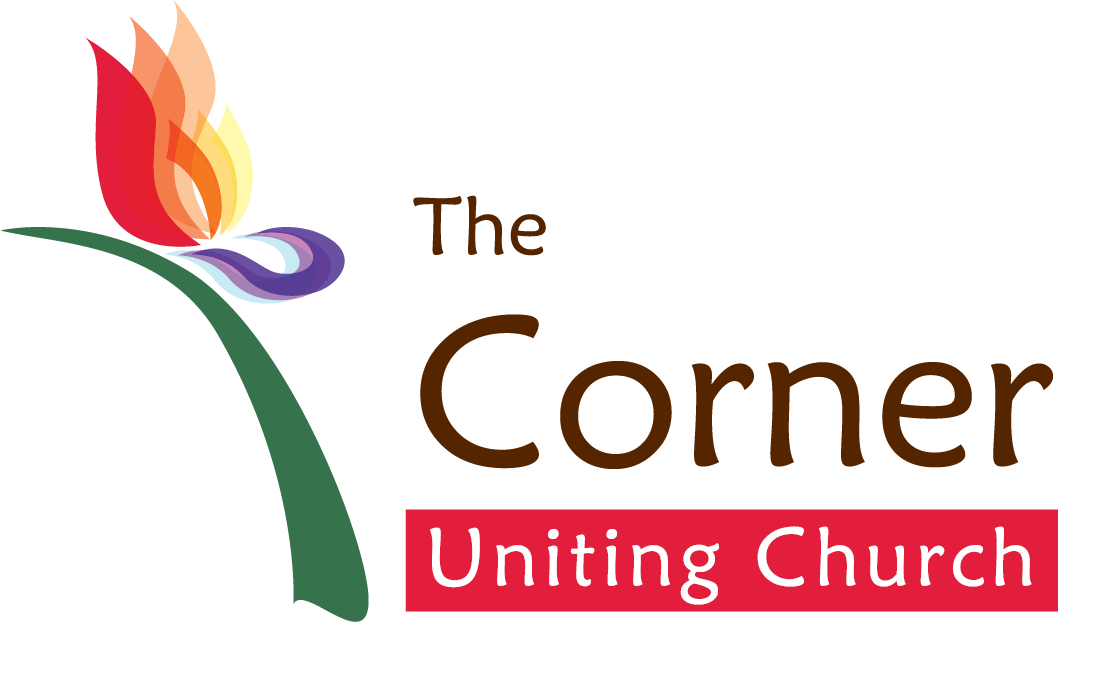
Below you will find the text for the 2024 Good Friday prayers stations at The Corner UC.
Scroll down the page to find the different stations.
THE TOMB PRAYER STATION
Read Mark 15: 42-47
It was now the evening before the Sabbath, and the Jewish people were getting ready for that sacred day. A man named Joseph from Arimathea was brave enough to ask Pilate for the body of Jesus. Joseph was a highly respected member of the Jewish council, and he was also waiting for God’s kingdom to come.
Pilate was surprised to hear that Jesus was already dead, and he called in the army officer to find out if Jesus had been dead very long. After the officer told him, Pilate let Joseph have Jesus’ body.
Joseph bought a linen cloth and took the body down from the cross. He had it wrapped in the cloth, and he put it in a tomb that had been cut into solid rock. Then he rolled a big stone against the entrance to the tomb.
Mary Magdalene and Mary the mother of Joseph were watching and saw where the body was placed.
Reflect and Act
Pick up a flower from the basket and take it with you into the tomb.
Stand in front of the tomb and imagine yourself as Mary Magdalene or Mary the mother of Joseph who had watched Jesus die on the cross and now watched as his body was placed in the tomb.
What do you imagine they would have been thinking about?
What emotions do you think they would have been experiencing?
We approach the tomb differently than Mary and Mary would have. We know that the story didn’t end with Jesus’ body in the tomb. We know more is to come in 3 days’ time.
Place your flower on the tomb to remind yourself that even in the darkness of Good Friday, there is light and hope to come.
DISPLAY OF CROSSES PRAYER STATION
Read Mark 15: 20-28
When the soldiers had finished making fun of Jesus, they took off the purple robe. They put his own clothes back on him and led him off to be nailed to a cross. Simon from Cyrene happened to be coming in from a farm, and they forced him to carry Jesus’ cross. Simon was the father of Alexander and Rufus.
The soldiers took Jesus to Golgotha, which means “Place of a Skull.” There they gave him some wine mixed with a drug to ease the pain, but he refused to drink it.
They nailed Jesus to a cross and gambled to see who would get his clothes. It was about nine o’clock in the morning when they nailed him to the cross. On it was a sign that told why he was nailed there. It read, “This is the King of the Jews.” The soldiers also nailed two criminals on crosses, one to the right of Jesus and the other to his left.
Reflect and Act
While the cross is a central image to the Christian faith and Good Friday, crosses bring up a range of different memories and emotions for each of us.
Some of us find the image of the cross essential to our faith experience and others find them difficult to reflect on.
Look at the crosses on the table and consider the words and emotions they bring up for you.
Take a texta and write those words and emotions on the paper crosses on the wall.
Give yourself some time to read the words others have written on the cross.
ROCKS PRAYER STATION
Read Mark 14: 27-31
Jesus said to his disciples, “All of you will reject me, as the Scriptures say, ‘I will strike down the shepherd,
and the sheep will be scattered.’ But after I am raised to life, I will go ahead of you to Galilee.”
Peter spoke up, “Even if all the others reject you, I never will!”
Jesus replied, “This very night before a rooster crows twice, you will say three times that you don’t know me.”
But Peter was so sure of himself that he said, “Even if I have to die with you, I will never say I don’t know you!”
All the others said the same thing.
Mark 14: 66-72 (After Jesus is arrested)
While Peter was still in the courtyard, a servant girl of the high priest came up and saw Peter warming himself by the fire. She stared at him and said, “You were with Jesus from Nazareth!”
Peter replied, “That isn’t true! I don’t know what you’re talking about. I don’t have any idea what you mean.” He went out to the gate, and a rooster crowed.
The servant girl saw Peter again and said to the people standing there, “This man is one of them!”
“No, I’m not!” Peter replied.
A little while later some of the people said to Peter, “You certainly are one of them. You’re a Galilean!”
This time Peter began to curse and swear, “I don’t even know the man you’re talking about!”
At once the rooster crowed a second time. Then Peter remembered that Jesus had told him, “Before a rooster crows twice, you will say three times that you don’t know me.” So Peter started crying.
Reflect and Act
In the above passage we read of Peter’s guilt, regret and shame. Not over the death of Jesus, but in his own actions. We can try and imagine the weight Peter carried over his denial of Jesus.
We all have moments in our lives that weight us down. Those moments filled with guilt for things we have done, regret for things not done and shame for things we afraid to name.
Take a rock from the table, hold it, feel it’s weight.
When you are ready grab a piece of chalk and write a word on your rock. A word that represents a weight that you are holding in your life. It could be something you are feeling guilt, regret or shame about.
Place it around the candle on the table. Allow this act to be a first step of releasing that weight.
LAST SUPPER PRAYER STATION
Read Luke 22: 7-20
The day had come for the Festival of Thin Bread, and it was time to kill the Passover lambs. So Jesus said to Peter and John, “Go and prepare the Passover meal for us to eat.”
But they asked, “Where do you want us to prepare it?”
Jesus told them, “As you go into the city, you will meet a man carrying a jar of water. Follow him into the house and say to the owner, ‘Our teacher wants to know where he can eat the Passover meal with his disciples.’ The owner will take you upstairs and show you a large room ready for you to use. Prepare the meal there.”
Peter and John left. They found everything just as Jesus had told them, and they prepared the Passover meal.
When the time came for Jesus and the apostles to eat, he said to them, “I have very much wanted to eat this Passover meal with you before I suffer. I tell you I will not eat another Passover meal until it is finally eaten in God’s kingdom.”
Jesus took a cup of wine in his hands and gave thanks to God. Then he told the apostles, “Take this wine and share it with each other. I tell you that I will not drink any more wine until God’s kingdom comes.”
Jesus took some bread in his hands and gave thanks for it. He broke the bread and handed it to his apostles. Then he said, “This is my body, which is given for you. Eat this as a way of remembering me!”
After the meal he took another cup of wine in his hands. Then he said, “This is my blood. It is poured out for you, and with it God makes his new agreement.
Reflect and Act
On Maundy Thursday (the day before Good Friday) we remember the last meal Jesus shared with his disciples. This is the meal we remember when we share in communion together.
We read in the above story Jesus saying ‘I have very much wanted to eat this Passover meal with you.’ Jesus knew this was to be his last meal with not just his disciples, but also his friends. These people had lived, travelled and followed Jesus for years.
Take a moment to think about the sadness Jesus might have felt in saying goodbye to his friends and knowing what he and they were to suffer over the next few days.
Meal times can be significant moments for us and our communities. They are moments for us to celebrate, grieve and share together. It is in these times that we remember our memories and experiences together. We share them through storytelling, jokes and even toasts.
Have a seat at the table. Imagine being one of Jesus’ disciples at that final meal. Pour yourself a drink (juice or water) and think about what you might share about Jesus in this final meal together.
Eg. What stories would you tell about Jesus?
What favourite parts of Jesus character would you share?
Share them with the people around you, or write them on the brown paper on the table.
EASTER INSPIRATION PRAYER STATION
Reflect and Act
Reflect on all you have heard, seen and experienced this Good Friday.
Use the art materials on the table to draw or write your reflections of Good Friday.
You can draw on the brown paper on the table, or the plain paper, or the colouring sheets.
Notice the limited amount of colours and art materials provided on the table. Reflect on how this can help inspire and inform your Good Friday creations.
For Extra Inspiration:
Visit the prayer stations across the church
Listen to the lyrics of the songs and words of the prayers
Reflect on the Good Friday story – one version can be found in Mark 15: 15-47
EASTER SYMBOLS PRAYER STATION
Reflect and Act
On the table you will find many different items that reflect parts of the Good Friday story.
Take time to read the description beside each item.
You may also want to carefully feel or smell the items.
Reflect on how seeing these items in person changes or enhances how you understand the Easter story.

